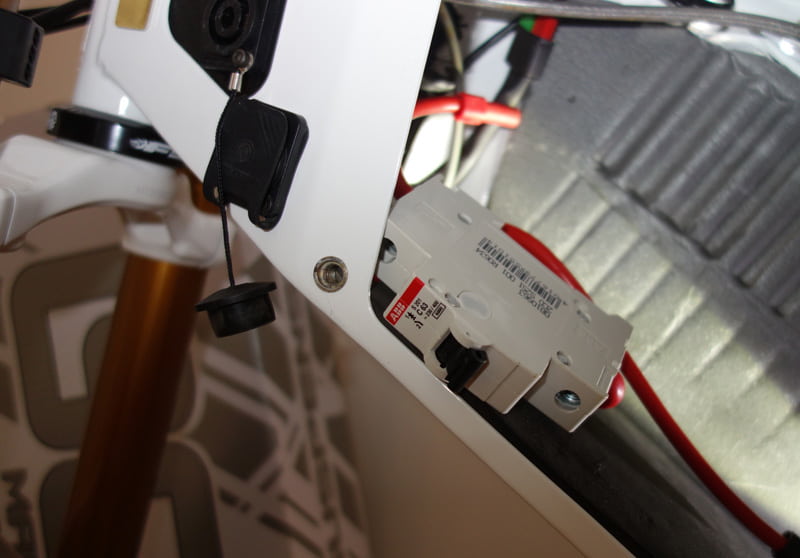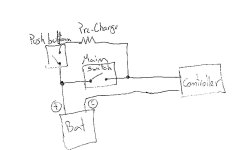ridethelightning
1 MW
- Joined
- Jul 21, 2013
- Messages
- 2,010
would have to agree there 8)
very tidy sale threads too.
this one will go far
very tidy sale threads too.
this one will go far
Allex said:Thx Luke!
Brentis, when you go 120km/h and slow down to 80 the difference in speed and wind resistance is huge, so it feels like you are crusing very slow in comparison. The bike is very stable so I have no problem in letting go in Cruise control mode(adaptto) at 85(was 85km/h in the video) on a flat.
Ohbse, funny you should ask about the cells. I added a pic about my breaker for the battery pack.
The cells are great performers, sag is minimal, I see around 4-5V sag at 11kW.
Yup Additional parallel strips are added to put less stress on the cells. Andrey used 0,3mm nickel strip, really hevay duty compared to regular 0,1.
8AWG wire is used together with xt150 connectors.
Do not have variable regen, just the stock on/off, kind of used by it now, especially with my riding style in the trails - you need all or nothing.
But I encountered some problems after about 15 cycles. I found two bad parallel strings. They slowly loose voltage at rest.
I had to cut the strip and look for a dud cell that was causing it.
View attachment 2
I did not want to break the hole string so I cut 3 at a time and let it rest for a few hours and then measure to see if it was some of them that I isolated
Finally found the bad guy after isolating 9 out of 14. This cell was loosing voltage rapidly. From 4,2 down to 1,5 in 24 hours. I could even feel that it was a bit warmer than the rest.
View attachment 1
One more parallel string to go now
Here is number 3 wich I have to look at. This one drops the voltage not as fast as the first one.
View attachment 3
I have one spare LG cell left so I really hope that this is the last one to fix. It is quite time consuming job. Don't really know what was causing this. Could be the cell itself or maybe a damage during the spotwelding.
Allex said:If you want a simple and reliable solution(Adapttos recommendation) just install a regular apartment breaker, I use C63A, it angages at about 135 DC Amps for me and you can use whatever battery voltage.
And you can say goodbye to all prechargers, no need them anymore!
http://www.abb.com/product/seitp329/49a79353b0194401c12572ab00257544.aspx?tabKey=2&gid=ABB2CDS251001R0634&cid=9AAC100489

Allex said:No precharge really, but I think I just buy a new one if the connectors will be bad inside, after all, they are cheap.
You can always modify the breaker to have a precharge inside, this this takes a lot of time,
riba2233 said:Adding precharge is easy, just connect 6k8 5w resistor parallel to the switch.

striker54 said:Bypass the main switch with the pre charge resistor but in serial with a push-button switch (momentary) and you have no drain in the battery
To power on push the button, wait 1 or 2 seconds and then the turn on the main switch.
You also should use a fuse inline with the main switch, or forget it if you use a dc breaker.
Sorry for the quality of the digitalization.
riba2233 said:With this method you can forget to turn on the precharge
riba2233 said:Best solution would be to have 2-step switch that switches on precharge first, and then the main switch.
What happens when the capacitors are always charged ?Allex said:How often do you break the connection if you are worrying about precharge? During the whole summer a did use the breaker twice when I actually removed the battery. Otherwise it is always on.
